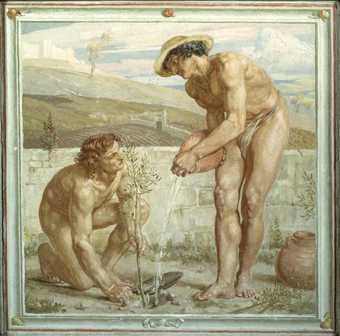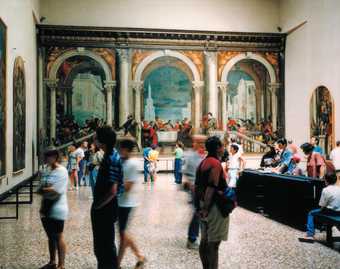
Sir Edward Poynter
Paul and Apollos
(1872)
Tate
Developed in Italy from about the thirteenth century and fresco was perfected during the Renaissance.
Two coats of plaster are applied to a wall and allowed to dry. On the second the design is drawn in outline. To make the painting, an area of the wall corresponding to a day’s work is freshly plastered and the design retraced joining up with the uncovered parts. This area is then painted on while still wet, using water-based paint. The paint is absorbed into the wet plaster thus making it a durable mural technique. Some touching up can be done when the plaster is dry but a whole fresco painted on dry plaster is liable to flake off.


